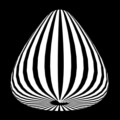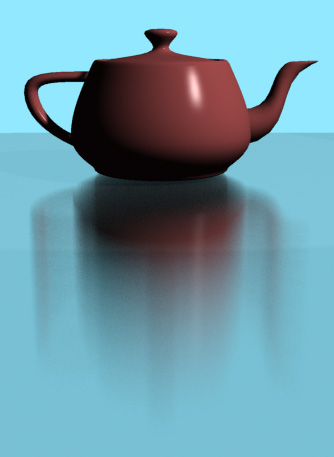
What are Anisotropic Reflections? We've all heard the word, but may not have a solid understanding of what they are in the real world and how they get produced. This tutorial is meant to answer some of those questions.
First, as a basic definition. Anisotropic is defined as follows:
anisotropic (adj.) an·i·so·trop·ic 1. Physics. of unequal physical properties along different axes. Cf. isotropic
As a more everyday practical definition, Anisotropic Reflections are just like regular Specular Reflections, except stretched or blurred based on the orientation of small grooves (bumps, fibers or scratches) that exist on a reflective surface. Here's an example below of a Computer Generated Anisotropic Reflection...

The floor has an anisotropic reflection, and as you can see, the teapot is blurred in the y direction, but not very blurred in the x direction, which causes it to look stretched.
What kinds of objects have anisotropic reflections?
Anything that has a fine grain that goes all in predominantly one direction. Good everyday examples would be hair, brushed metals, pots and pans, or reflections in water that's being perturbed (for example, by falling rain). Also, CDs are anisotropic, the reflection is distorted by the tiny grooves that go in a circular fashion around the CD.
What causes an Anisotropic Reflection?
Fine bumps in a surface cause reflections to be blurred uniformly in
all directions if
the bumps are reasonably random (Isotropic Reflection). If these fine
bumps create a pattern,
then the pattern can affect the way the reflection looks (Anisotropic
Reflection).
Here are
two
spheres in CG, the first is a straight reflection in the floor, the
second is a blurred
isotropic reflection.
 |
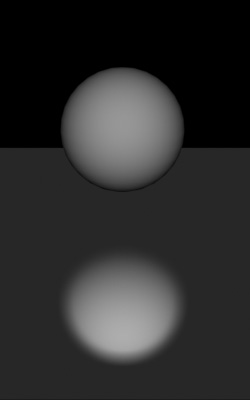 |
If this were a real world photo, the blurry reflection would be caused by tiny random bumps in the surface of the floor (image below), bumps possibly so small that you may not notice the bumps, but you will notice their affect on the reflection.
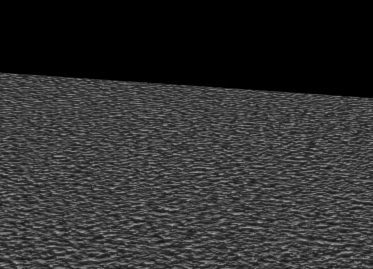
So now, what happens if these tiny bumps are in a regular pattern that has direction to it? For example, brushed metals are metals that have small grooves that all head in the same direction (image below). This causes reflections to blur in a specific direction, which is called an Anisotropic reflection.
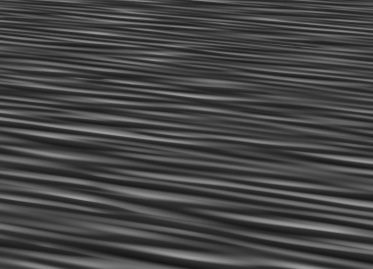
Take these two examples of real world brushed metals.
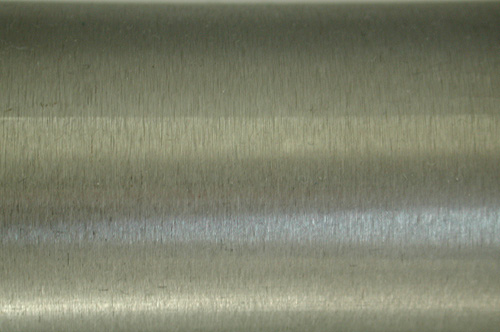

The first image is a close-up of a railing where you can
actually
see some of the fine grain which is going in one direction. The next
is a further away photo of a fridge door whose surface is
made from
a similar material. Now notice how the reflections of the light
switches
and wires are blurred in a particular direction instead of being
blurred
uniformly in all directions. In this case, the reflection is blurred
side to side while the grain goes up and down. The reflection is always
stretched in the opposite direction to the grain.
The Physics Behind It
Without getting overly technical, what's happening here is that instead of seeing one reflection on a surface, you're seeing the reflection repeated again and again on the bumps on the surface, and the reflections combine to form a distorted reflection. For example, here's a reflection of the light source on a doorstop.
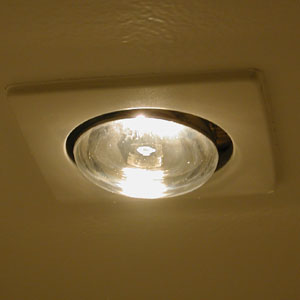
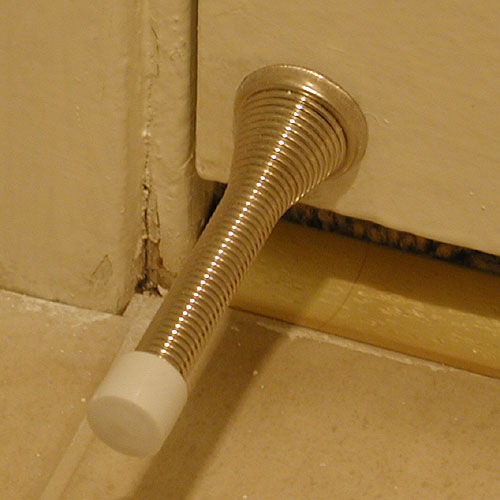
If we look at the doorstop close, we could think of the doorstop as a collection of rounded surfaces, each that contains a reflection of the light overhead. If you had only a single coil, you'd see a single reflection, but now place a second coil beside the first coil, you now have two reflections side by side. But it's not the exact same reflection, since the surfaces are at slightly different angles to the thing it's reflecting. Put a whole bunch of them together, and then move back until you can't see the bumps anymore, you'll see now a reflection of a perfectly round light that looks like a long, thin light.
Here's a CG example of the same phenomenon, here's a single coil reflecting an overhead light source.
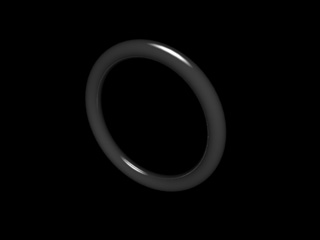
And then several coils lined up.
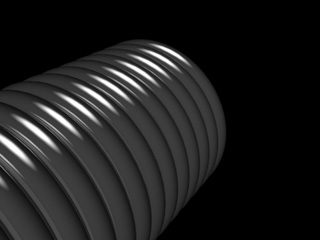
And here's that view but from further back.
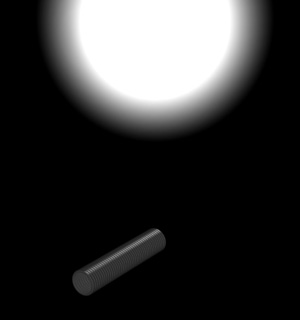
Notice how the series of smaller reflections now form one big long stretched reflection.
Another example to consider is reflections on water at night.
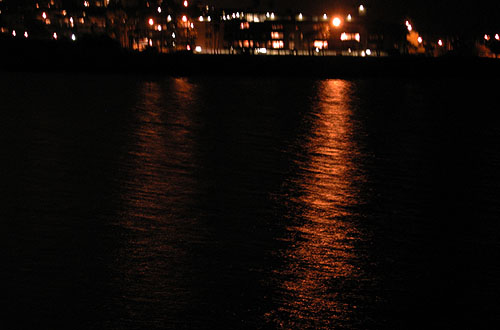
A simple round light source reflects as a long stretched highlight
because
the water has ripples, ripples that serve a similar function as the
grooves
on the doorstop, or the grooves on brushed metal, just at a much larger
scale.
Here's another example, a set of traffic cones in front of several puddles. If this were one puddle, the height of the cones in the reflection would be the same as the height of the cones. But notice the reflection of the cones is much taller than the original cones, which is the stretching caused by the "grooves", in this case, our grooves are actually multiple distinct puddles stacked side by side.

California has had a very rainy month, which has allowed me to take some good photos of anisotropic effects in water on the street. This first image is a set of cars turning at a traffic light, notice their headlights blurred in the water surface that's being perturbed by the rain drops, as well as being disturbed by the uneven surface of the road.
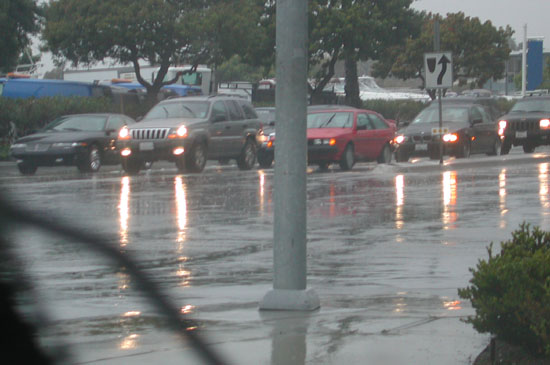
Also notice how each reflection does eventually stop. As mentioned above when talking about the doorstop, the reflection on each bump is from a slightly different angle, so eventually the angle from which a bump sees a reflection is so shallow that it no longer picks up any reflection, which causes the overall reflection to stop. The amount of perturbance in the surface, as well as your viewing angle, and the brightness of the object being reflected all affect how the reflection looks.
Here's a rear headlight.
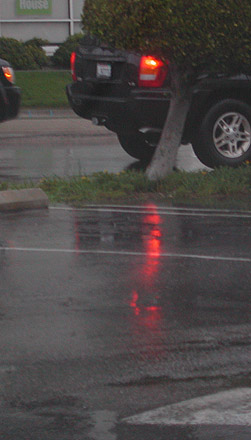
And just so you don't think this effect only happens to lights,
here's
a blurry reflection of some trees.
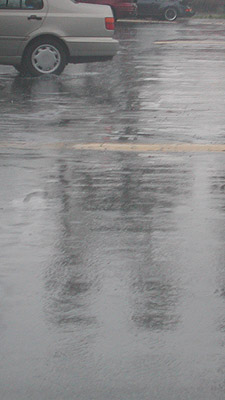 |
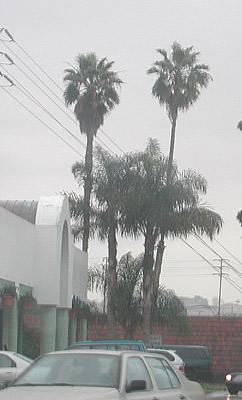 |
Consider these two pictures. If you observe carefully, the further you are from a reflection, the more blurred it is. Here's a car's headlight.
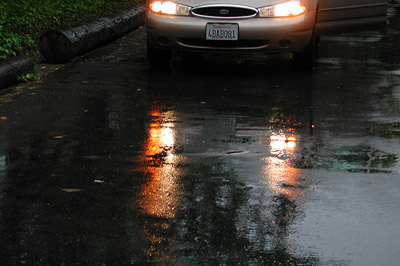
And then a photo taken from very close to the reflection.
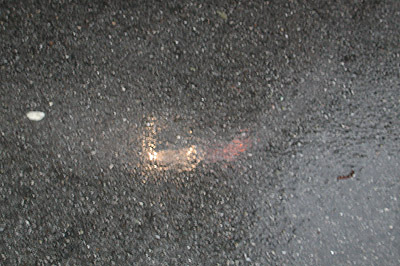
Notice how it is still blurred by the bumpy surface of the road, but the anisotropic effect is gone. The anisotropic effect varies based on distance as well as angle, for example, consider this noise assigned to a plane.
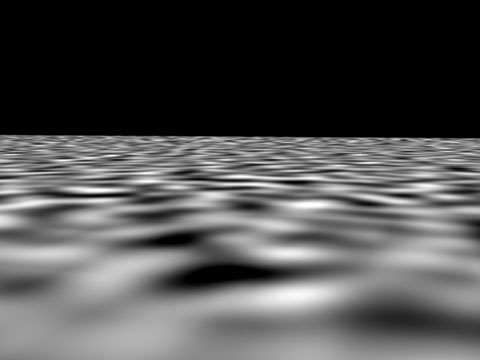
This is the same noise uniformly over the surface of a plane. But notice the closer noise looks larger, and as it goes into the distance the noise gets smaller and the pattern gets more packed. So your reflection will be distorted differently the further back your reflection goes into the bump pattern.
Here's a similar phenomenon, dealing with distance instead of
viewing
angle. Notice the pen and my hand reflected in the fridge is very
blurred
at a distance of over a foot, and not very blurred at all as the pen
gets
really close.
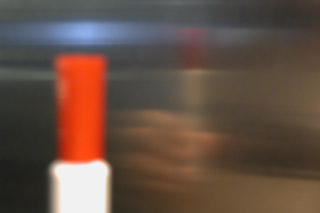 |
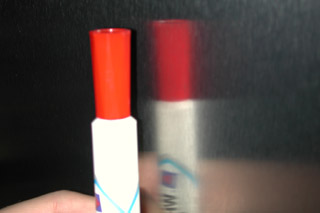 |
Here's the direction of the grooves on the fridge.
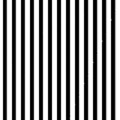
Here's a couple of photos of a pot I have at home, notice the grooves are going around in a circle on the bottom of the pot, and how it affects the reflection.
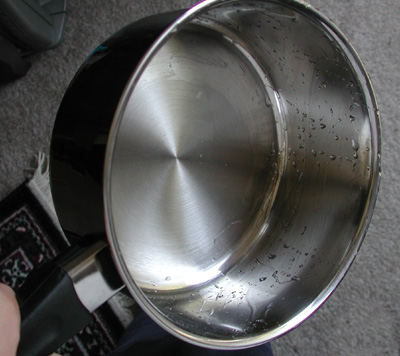
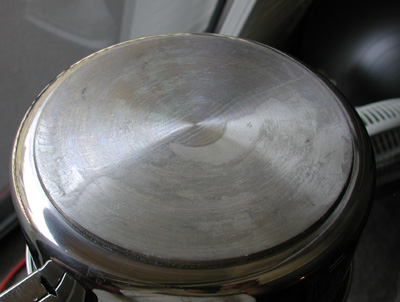
Here's the direction of the grooves.
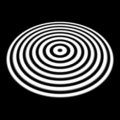
Here the bottom of the pot is reflecting two highlights, an orange tinted lamp from the right, and an open window from the left. Notice how the position, intensity and color of the two light sources creates very different shaped reflections.
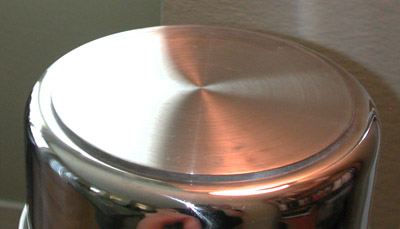
Here's the same pot moving past a point light source right to left. Notice how the reflection changes on the pot as the angle to the light source changes.
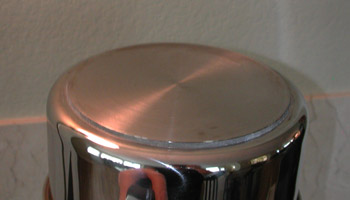
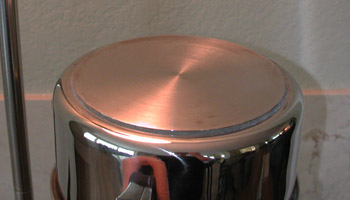
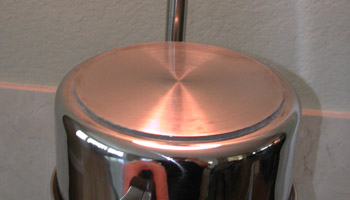
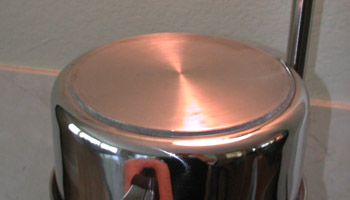
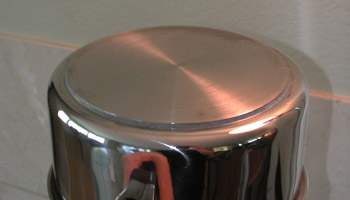
Here's a photo of a Compact Disc. Notice a similar pattern to the bottom of the pot. That's because the grooves are identical. (The rainbow colors come from Diffraction, which will be discussed in another tutorial).
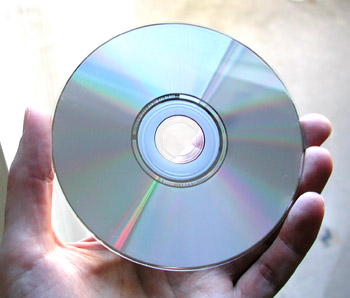
Here's the same phenomena on a garbage can.

Cylindrical Shapes
Here's a cylindrical shape, the grooves are going left to right, so the reflectons are stretched up and down.
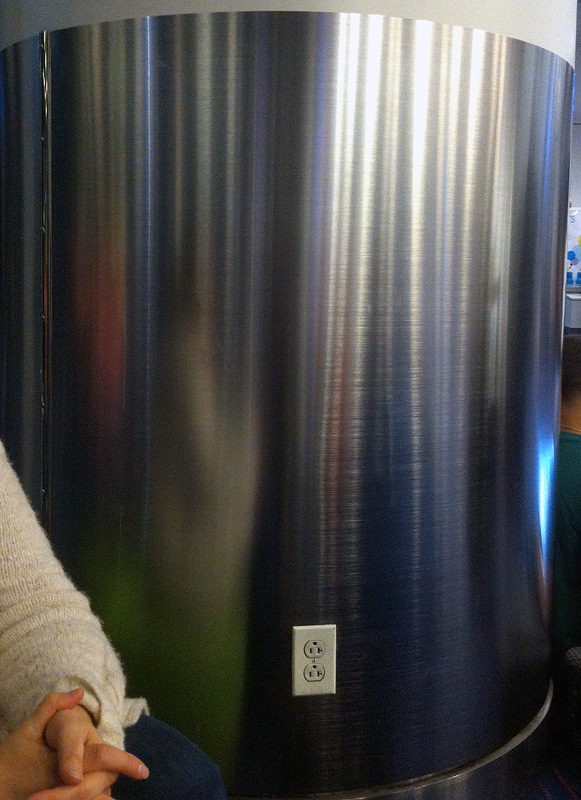
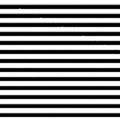
Misc Shapes
Two more photos, these are two christmas ornaments that my grandmother had at her house. Both are made up of fine synthetic hairs that all travel in one direction.
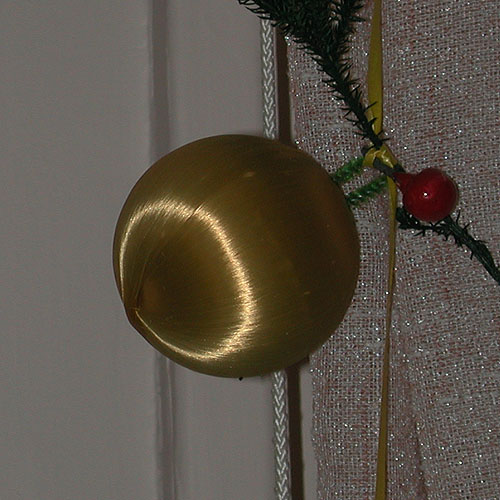
Here's the direction of the grooves.
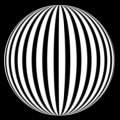
And a christmas tree ornament with a conical shape.
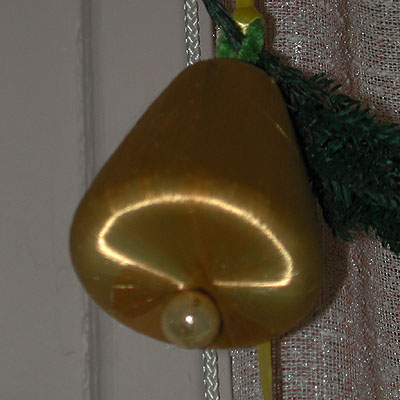
Here's the direction of the grooves for the conical ornament.
